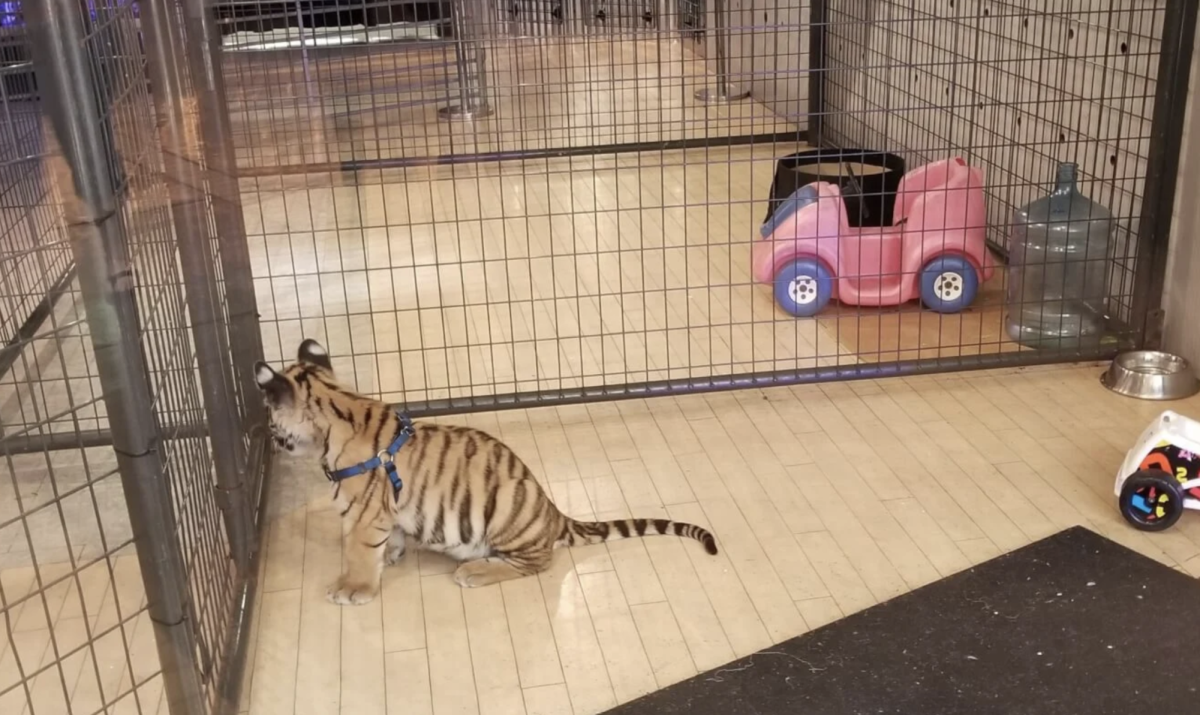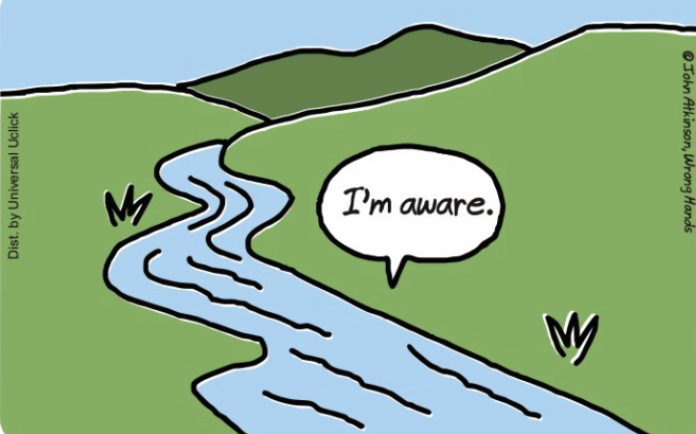Cub petting is an international practice that abuses big cat cubs and uses them as props for the tourism and photo industries. This practice extends to tiger, lion, jaguar, leopard, cheetah, and other wildcat cubs, although the most common cats in the cub petting industry are tiger cubs. Cub petting offers photo opportunities and playtime with these cubs for a fee, and usually will be hosted in outlet malls or at roadside zoos. This practice is incredibly abusive in many ways and affects cubs, their mothers, and the public.
Big cat cubs are only legally allowed to be handled from 8-12 weeks old before they are considered ‘too dangerous’ by U.S. law. However, these breeders will take cubs from their mothers days, or even hours, after their birth to start using the cub as early as possible. In the wild, cubs usually stay with their mothers for up to two years. Therefore, removing these cubs from their mother as infants and then passing around from stranger to stranger for hours without rest is extremely harmful. Additionally, to lengthen the youthful looks of the cub, exhibitors will often underfeed the cubs or delay the switch to a solid diet. The resulting malnutrition can cause metabolic bone disease (MBD), which causes bones to break easily as a result of a chronic calcium deficiency. Furthermore, cubs are often sedated to make them more manageable for customers, when they would normally shy away from overwhelming touch, sounds, and lights. The cubs are often denied sleep for hours, or days, on end, as exhibitors will wake them any time a customer pays to play or take a photo. This sleep deprivation comes at a crucial time in the development of these big cats as cubs need the same amount of sleep as a human baby. Cubs are then punished for exploring, using their claws or teeth, or making any sounds that are too ‘distressing’. These things are also critical for their development into adulthood. Additionally, if a breeder or exhibitor decides that the cub overuses their claws or teeth, they will forcibly defang and declaw those cubs, making them dependent on humans for the rest of their lives.
When the cubs that manage to survive the horrors of exhibit life, normally due to their large size, they are sold to private owners, roadside zoos, or butchered for parts. If a cub grows into an adult and is sold to a private owner, it will ikely live the rest of its life alone, in a concrete and metal cage barely bigger than its body. This is a stark contrast to the social and pack nature that most big cats experience in the wild. Therefore, many of these adult cats will oftentimes become depressed or physically ill in these situations. On the occasion they make it to a roadside zoo, big cats will live in slightly better conditions than privately owned cats but are usually still in overcrowded cages and underfed. Additionally, many of these cats cannot be released into the wild due to their inability to survive on their own. Since most of the cubs are taken from their mothers at such a young age, they don’t know how to ‘be’ tigers, lions, etc., and they lack the ability to hunt, socialize, or survive without humans.
Adult female cats are also continually abused by these companies, as they are put through something called ‘speed breeding’. In the wild, female cats usually only have litters every two to three years, but in these petting facilities, they are often bred two or three times a year. This causes a multitude of health problems for the mother. Additionally, big cat mothers, like humans, are emotionally attached to their cubs, usually raising them for around two years in the wild, so when the cubs are removed at birth, it causes the mother a lot of mental stress and depression. Cases have been recorded where these big cat moms will eventually die after refusing to eat, drink, or move after their cubs have been taken.
Many of these petting facilities or exhibitors will tell their customers that the cubs were rejected by their mothers. Therefore, by paying a fee, customers are supporting conservation efforts or providing food for other animals they have in their service. When they can no longer be used to make a profit for their owners, they are discarded like trash with no regard for their health or safety. Furthermore, the cubs actually cause environmental problems instead of helping with conservation. Most cubs in these petting facilities are actually hybrid cats, such as a Bengal tiger crossed with a Malayan tiger, and therefore they have no place in the wild. Even if a cub were to survive the cub petting industry and could survive on its own, there is no place to release them into the wild because they never existed naturally. So, these breeders are creating a surplus of big cats that cannot be released or live without humans, and must, instead, be kept in captivity for the rest of their lives. Thus, the continued breeding of hybrid cat cubs offers no real conservation value and instead dilutes the impact of true conservation efforts.
In order to help end this abusive industry, there are three main things that animal lovers or potential customers can do. Firstly, avoid any zoos or stands that offer the opportunity to take a photo or play with big cat cubs. This is never something that any credited or respectable zoo would do. Secondly, educate others on what cub petting truly is, as many customers of these organizations simply are unaware and, therefore, may participate in the practice. Lastly, only visit zoos that are Association of Zoos and Aquarium (AZA) accredited, meaning they are committed to conservation efforts or rescuing and rehabilitating wild animals. Cub petting has recently seen a downtick in profits after the U.S. passed the Big Cat Safety Act, but still exists in more rural areas. In other countries outside the U.S., such as South Africa, cub petting is still an incredibly profitable industry due to all the uneducated tourists.



